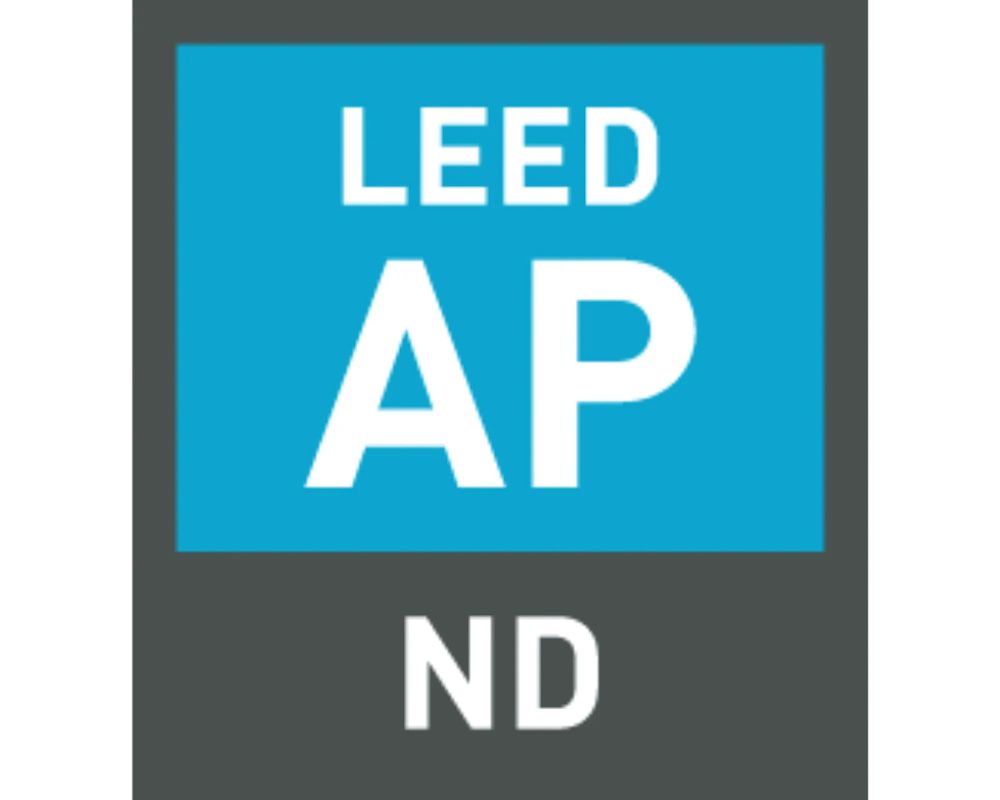Achieving the LEED AP Neighborhood Development (ND) certification is a powerful step for architects, planners, and sustainability professionals dedicated to fostering eco-friendly communities. This LEED AP Certification confirms your expertise in sustainable neighborhood design and aligns you with the standards of the U.S. Green Building Council (USGBC). Our guide offers an in-depth look at the LEED AP ND certification, covering the essentials for those interested in making a meaningful impact on urban and community design.
What Is LEED AP ND Certification?
The LEED AP ND (Accredited Professional in Neighborhood Development) certification validates professionals who understand how to design, implement, and maintain sustainable communities. This certification is part of the broader LEED (Leadership in Energy and Environmental Design) program, focusing on energy efficiency, resource management, and environmental impact reduction at the neighborhood level.
Benefits of LEED AP ND Certification
1. Enhance Career Opportunities in Sustainable Development
Achieving LEED AP ND certification can open doors to advanced positions in sustainability consulting, urban planning, and green building architecture. Employers seek LEED-accredited professionals who bring specialized expertise, offering competitive salaries and long-term career growth.
2. Contribute to Environmental Sustainability
LEED AP ND certification allows professionals to contribute directly to environmental preservation by creating neighborhoods that minimize resource consumption, reduce carbon emissions, and promote healthy living environments. Certified projects often feature green spaces, efficient water management, and alternative transportation access.
3. Improve Project Marketability
For development firms and consulting agencies, having LEED AP ND-certified professionals on staff enhances a project’s appeal to clients seeking sustainable solutions. The certification provides a marketing advantage, signaling a commitment to responsible and innovative urban planning.
LEED AP ND Certification Requirements
Eligibility Criteria
Before pursuing LEED AP ND certification, candidates must first achieve the LEED Green Associate credential. While there is no mandatory prerequisite, experience with LEED projects is highly recommended to ensure a comprehensive understanding of the certification process.
Exam Overview
The LEED AP ND exam consists of 100 multiple-choice questions, and candidates must score at least 170 out of 200 to pass. This exam evaluates knowledge in three main areas: smart location and linkage, neighborhood pattern and design, and green infrastructure and buildings.
Exam Fees
- LEED AP ND Exam Only: $350 (USGBC members receive a discount of $100)
- Combined LEED Green Associate and AP Exam: $550 (USGBC members: $400)
Steps to Achieving LEED AP ND Certification
- Obtain LEED Green Associate Certification
The first step is achieving the LEED Green Associate credential, which introduces foundational concepts in sustainable building and development practices. - Gain Project Experience
Working on LEED-certified projects provides valuable hands-on experience that reinforces your understanding of the certification criteria. Engaging in neighborhood development projects is especially beneficial for the LEED AP ND specialization. - Register for the Exam
Candidates can register for the LEED AP ND exam on the USGBC’s official website. Plan your study schedule according to the exam structure and make use of USGBC resources for preparation.
Core Components of LEED AP ND Certification
The LEED AP ND rating system is based on three critical components that define sustainable neighborhoods:
1. Smart Location and Linkage (SLL)
This component focuses on choosing development locations that minimize environmental disruption and promote accessibility. It emphasizes:
- Avoiding ecologically sensitive areas
- Supporting compact development patterns
- Promoting connections to existing infrastructure
2. Neighborhood Pattern and Design (NPD)
NPD promotes the principles of urban planning that foster community engagement and accessible amenities. Key criteria include:
- Walkability: Encourages pedestrian-friendly designs with pathways and public spaces.
- Mixed-Use Development: Integrates residential, commercial, and recreational spaces within neighborhoods.
- Community Connectivity: Prioritizes designs that connect residents to essential services and social hubs.
3. Green Infrastructure and Buildings (GIB)
The GIB component supports environmentally responsible building practices and resource-efficient infrastructure, focusing on:
- Energy Efficiency: Using sustainable energy sources and technologies to reduce consumption.
- Water Efficiency: Promoting water-saving fixtures, stormwater management, and greywater reuse.
- Minimizing Environmental Impact: Utilizing eco-friendly materials and building techniques to reduce pollution and waste.
Continuing Education and Recertification
To maintain LEED AP ND certification, professionals must complete and report 30 continuing education (CE) hours every two years. These hours include at least 24 general CE hours and 6 rating system–specific CE hours focused on Neighborhood Development.
Preferred Learning Modes for LEED AP ND Preparation
We offer several learning options tailored to various schedules and learning preferences, helping you succeed on your first attempt.
- 1-on-1 Training: Personalized coaching, scheduled flexibly to suit your availability.
- Online Training: Accessible and cost-effective learning for busy professionals.
- Corporate Training: Customized training for teams aiming to enhance company-wide expertise in sustainable development.
Conclusion
The LEED AP ND Certification empowers professionals with the expertise to design sustainable neighborhoods that positively impact environmental and human health. Whether you are an architect, planner, or sustainability consultant, LEED AP Certification offers a unique advantage, signaling your commitment to sustainable development at the community level.


